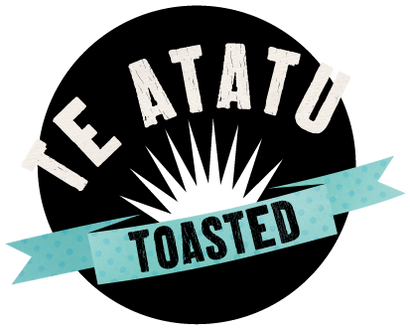Your Cart is Empty

Are you consuming too much salt?
April 09, 2024
There’s been plenty of publicity about the dangers of eating too much sugar in recent years and it may have drowned out an important message we need to hear about sodium.
Sodium is a mineral that’s most commonly found in food as salt (sodium chloride). We need a certain amount of it to keep the fluids and electrolytes in our bodies balanced. However, just like excess sugar, too much sodium can cause health issues – research shows it contributes to high blood pressure, strokes and heart attacks.
So how do we get the balance right?
How much sodium do we need?
The NZ Nutritional Foundation says we should try to restrict our sodium to 2000mg a day, which is equivalent to about one teaspoon of salt. In reality, on average New Zealanders are consuming 3500mg a day (about one and a half teaspoons of salt) which is well above the recommended amount.
It’s not the salt that occurs naturally in food or the salt we are adding to our food while cooking or eating it that is the main culprit – that only accounts for about a quarter of our salt intake.
Most of the salt we consume comes from processed foods.
High sodium foods to watch out for
Here are some of the foods that have the highest sodium content:
- Smoked, cured, salted or canned meat, fish or poultry including bacon, salami, ham, frankfurters, sausage, sardines, caviar and anchovies
- Tinned fish in brine
- Cheese including cheese spreads and cottage cheese
- Packaged snack foods such as potato chips
- Easy-cook packet foods such as instant noodles and rice risottos
- Bread and many types of crackers
- Takeaway foods such as pizza and burritos
- Pre-made soups, sauces and flavour sachets
- Stocks and dressings
When buying packaged foods, refer to the Nutrition Information Panel to check whether it’s a low, medium or high sodium food.
Low salt foods are those which contain less than 120mg of sodium per 100g of food
Medium salt foods contain between 120 and 600mg of sodium per 100g of food
High salt foods contain more than 600mg of sodium per 100g of food
Tips for reducing sodium in our diets
- Eat fresh foods where you can.
- Choose a low-sodium breakfast cereal because this is something you eat most days. Te Atatu Toasted Healthy Blend muesli has only 8.8mg of sodium per 100g and all our cereals are classified as low-sodium foods. Many cereals contain over 400mg per 100g!
- Here's an interesting fact, Weetbix has the same sugar content as our Healthy Blend muesli but over 30 times more salt!
- Use fresh herbs and spices to flavour food instead of salt, stocks or soy sauce.
- If you add salt to your food, do so after cooking and once you’ve tried the food first so you don’t add too much.
- Limit packaged and processed foods as they will include salt added to flavour and preserve the food.
- Find low-salt snacks you enjoy such as fruit, unsalted nuts, plain and unsalted popcorn, yoghurt, biscuits and crackers low in sodium.
- Limit your intake of salami, sausages, ham and other processed or cured meats.
- Choose vegetables and fish canned in spring water instead of brine.
- When shopping, read labels for sodium content of foods. Check the amount of sodium per serving, as well as per 100g, and don’t forget to check the number of servings per container.
- Limit takeaways which are often high in salt. Make them at home instead, using fresh ingredients. If you do buy them, ask for no added salt.
- At restaurants, ask that no salt be added to your meal.
- Take salt and salty sauces off the table so younger family members won't develop the habit of adding salt. Or only have low-sodium versions of sauce in the house.
Low-sodium recipes
There are several cookbooks on the market that contain only recipes low in sodium but you can also get loads of inspiration online.
Search low-sodium recipes on Taste.com.au for a range of mains and desserts that are all low in salt. Each recipe on the site lists the sodium content on the nutritional panel. Check out this yummy Poached Chicken with rocket, raspberry vinaigrette and avocado recipe.
Eatingwell.com has a large section of low-sodium meal ideas but you will need your conversion calculator out as the ingredients are in pounds and ounces.
There are also a couple of fabulous low-sodium recipes on the Te Atatu Toasted website, both using our Healthy Blend muesli. Te Atatu Oat Cakes are yummy eaten with cheese and chutneys (remember to check the sodium content before you buy any relishes or sauces). The Healthy Breakfast Cookies are low in salt, high fibre, high protein and low in sugar – they are great for busy mornings and also make a healthy lunchbox snack.
Breads can be high in salt, consider making your own, - we have a couple of fabulous recipe for you the Everyday grainy bread made with the Healthy Blend Muesli and the delicious Gluten Free Bread made with our Gluten Free Blend.
Check out this month’s other blogs:
What you need to know about sugar
Why protein packs a powerful punch for health
How to read a food label - next week
💥 You deserve to start your day with a low sugar, healthy breakfast cereal.
👉 Choose your Blend here and we'll deliver to your door - easy! 💥
